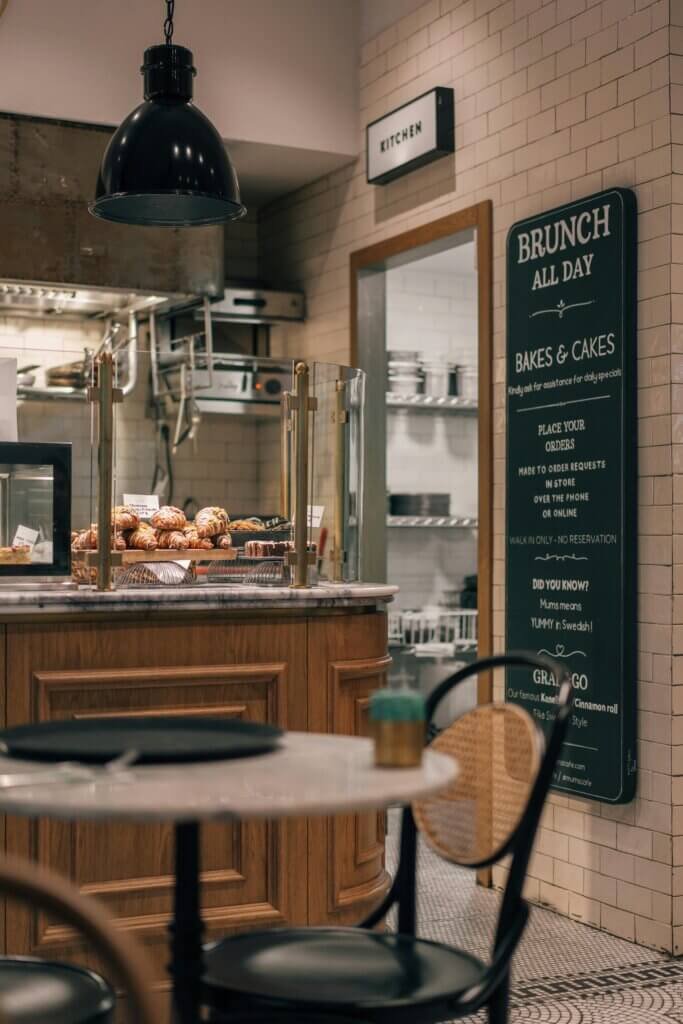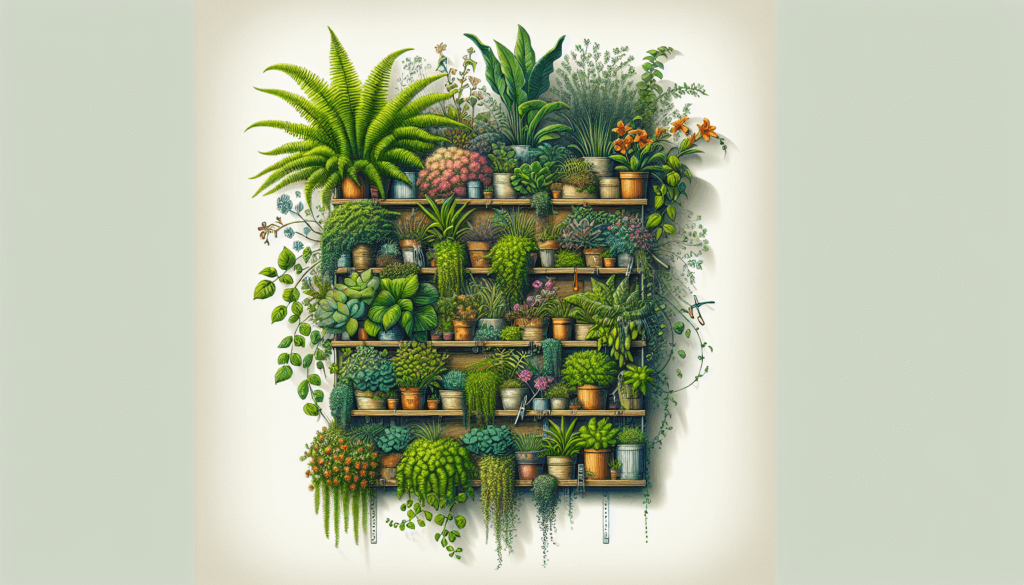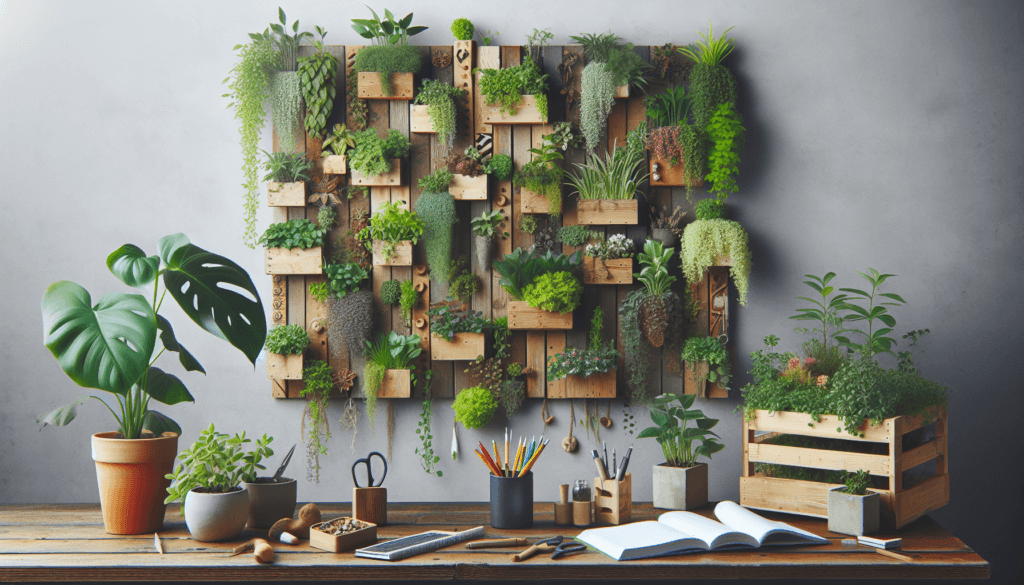If you’re a gardening enthusiast looking to add a touch of creativity and greenery to your space, then you’re in luck! In this article, we will explore the most popular DIY vertical garden projects that are taking the gardening world by storm. From repurposed wooden pallets to hanging shoe organizers, these innovative ideas will help you transform any empty wall or corner into a vibrant and lush oasis. Whether you have a small urban balcony or a spacious backyard, these DIY projects offer endless possibilities to flex your green thumb and create a stunning vertical garden that is bound to impress. So roll up your sleeves and get ready to embark on a journey filled with inspiration and ideas that will surely take your gardening skills to new heights!

Hanging Gutter Garden
Materials Needed
- Gutter sections
- End caps
- Support brackets
- Screws or nails
- Potting soil
- Plants or seeds
- Water
Step-by-Step Instructions
- Start by measuring the desired length for your hanging gutter garden. Cut the gutter sections accordingly.
- Attach the end caps to the gutter to create a closed container.
- Next, install the support brackets on a sturdy wall or fence, making sure they are level and securely attached.
- Hang the gutter sections on the brackets, ensuring they are evenly spaced and secure.
- Fill the gutter sections with potting soil, leaving about an inch of space at the top.
- Plant your chosen plants or seeds in the gutter sections, following their specific care instructions.
- Water the plants thoroughly, making sure the soil is evenly moist.
- Maintain your hanging gutter garden by regularly watering, pruning, and fertilizing as needed.
Tips and Tricks
- Choose plants that are suitable for vertical gardening, such as herbs, strawberries, or small flowers.
- Consider adding a drip irrigation system to ensure consistent watering.
- Be mindful of the weight of the gutter sections when choosing a location for your garden.
- Hang the gutter sections at a height that is comfortable for maintenance and harvesting.
Pallet Planter Wall
Materials Needed
- Pallets
- Landscape fabric or weed barrier
- Staple gun or nails
- Potting soil
- Plants or seeds
- Water
Step-by-Step Instructions
- Find a suitable pallet for your planter wall, ensuring it is in good condition and free from any chemicals or contaminants.
- Attach landscape fabric or a weed barrier to the back and sides of the pallet, securing it with a staple gun or nails.
- Lay the pallet on the ground with the fabric side facing up.
- Fill the gaps between the planks with potting soil, ensuring it is evenly distributed.
- Plant your chosen plants or seeds in the soil, following their specific care instructions.
- Water the plants thoroughly, making sure the soil is evenly moist.
- Once the plants are established, stand the pallet upright against a wall or fence, ensuring it is securely anchored.
- Maintain your pallet planter wall by regularly watering, pruning, and fertilizing as needed.
Tips and Tricks
- Choose plants with shallow roots, as the space between the planks is limited.
- Consider using succulents, herbs, or small flowers for a visually appealing and low-maintenance garden.
- Make sure the pallet is securely anchored to prevent it from toppling over.
- Place the pallet planter wall in an area that receives adequate sunlight for the chosen plants.
Stacked Pot Tower
Materials Needed
- Terracotta pots of various sizes
- Potting soil
- Plants or seeds
- Water
Step-by-Step Instructions
- Start with the largest pot and fill it with potting soil, leaving about an inch of space at the top.
- Plant your chosen plant or seeds in the soil, following its specific care instructions.
- Place a smaller pot on top of the soil in the larger pot, ensuring it is centered.
- Fill the smaller pot with potting soil and plant the next plant or seeds.
- Continue this process with additional pots, gradually decreasing their size as you stack them.
- Ensure each pot is securely placed, with the soil level and centered within the pot below.
- Water each pot thoroughly, making sure the soil is evenly moist.
- Maintain your stacked pot tower by regularly watering, pruning, and fertilizing as needed.
Tips and Tricks
- Select plants that have similar watering and sunlight requirements.
- Consider using trailing or cascading plants to create a visually striking tower.
- Place the stacked pot tower in an area that receives adequate sunlight for the chosen plants.
- Be cautious when watering to prevent excessive moisture buildup in the lower pots.
Shoe Organizer Herb Garden
Materials Needed
- Over-the-door shoe organizer with clear pockets
- Potting soil
- Herb plants or seeds
- Water
Step-by-Step Instructions
- Hang the over-the-door shoe organizer on a hook or nail, ensuring it is securely attached.
- Fill each pocket with potting soil, leaving about an inch of space at the top.
- Plant your chosen herb plants or seeds in the soil, following their specific care instructions.
- Water each pocket thoroughly, making sure the soil is evenly moist.
- Hang the shoe organizer herb garden in a sunny location, preferably near a kitchen or cooking area.
- Maintain your herb garden by regularly watering, pruning, and fertilizing as needed.
- Harvest the herbs when they reach the desired maturity for cooking or other uses.
Tips and Tricks
- Choose herbs that are commonly used in cooking, such as basil, parsley, or thyme.
- Label each pocket to easily identify the herbs.
- If using seeds, allow ample time for germination and growth before harvesting.
- Consider adding a drip irrigation system to ensure consistent watering.

Vertical Succulent Garden
Materials Needed
- A vertical frame or pallet
- Landscape fabric or weed barrier
- Succulent plants or cuttings
- Potting soil
- Water
Step-by-Step Instructions
- Prepare your vertical frame or pallet by ensuring it is clean and in good condition.
- Attach landscape fabric or a weed barrier to the back and sides of the frame or pallet, securing it with a staple gun or nails.
- Lay the frame or pallet flat on the ground with the fabric side facing up.
- Fill the gaps between the frame or pallet with potting soil, ensuring it is evenly distributed.
- Plant your succulent plants or cuttings in the soil, following their specific care instructions.
- Water the plants thoroughly, making sure the soil is evenly moist.
- Allow the succulents to establish and root in the vertical garden.
- Once the plants are established, stand the vertical frame or pallet upright against a wall or fence, ensuring it is securely anchored.
- Maintain your vertical succulent garden by regularly watering, pruning, and fertilizing as needed.
Tips and Tricks
- Choose succulent varieties that are well-suited for vertical gardening, such as Sedum, Echeveria, or Crassula.
- Ensure the frame or pallet is securely anchored to prevent it from toppling over.
- Provide ample sunlight for the succulents, as they thrive in bright, indirect light.
- Be mindful of the watering needs of succulents and avoid overwatering.
Bottle Vertical Garden
Materials Needed
- Plastic bottles with caps
- Utility knife or scissors
- Twine or wire
- Potting soil
- Plants or seeds
- Water
Step-by-Step Instructions
- Start by collecting plastic bottles of your desired size and shape, ensuring they are clean and free of any labels.
- Using a utility knife or scissors, cut off the bottom of each bottle, creating a planter.
- Punch holes in the sides of the bottles for drainage, ensuring they are large enough to allow excess water to drain out.
- Attach twine or wire around the neck of each bottle, creating a loop for hanging.
- Fill each bottle with potting soil, leaving about an inch of space at the top.
- Plant your chosen plants or seeds in the soil, following their specific care instructions.
- Water each bottle thoroughly, making sure the soil is evenly moist.
- Hang the bottles vertically, using nails or hooks on a wall or fence, ensuring they are securely attached.
- Maintain your bottle vertical garden by regularly watering, pruning, and fertilizing as needed.
Tips and Tricks
- Select plants with compact root systems that are suitable for growing in containers, such as herbs, small flowers, or trailing plants.
- Consider arranging the bottles in a visually appealing pattern or design.
- Hang the bottles in an area that receives adequate sunlight for the chosen plants.
- Use a drip irrigation system or self-watering bottles to ensure consistent moisture levels.

Recycled Soda Bottle Wall Garden
Materials Needed
- Empty soda bottles with caps
- Utility knife or scissors
- Potting soil
- Plants or seeds
- Water
Step-by-Step Instructions
- Collect empty soda bottles, ensuring they are clean and free of any labels or residue.
- Using a utility knife or scissors, carefully cut off the bottom of each bottle, creating a planter.
- Remove the cap from each bottle and punch holes in the cap for drainage.
- Fill each bottle with potting soil, leaving about an inch of space from the top.
- Plant your chosen plants or seeds in the soil, following their specific care instructions.
- Water each bottle thoroughly, making sure the soil is evenly moist.
- Attach the bottles to a wall or fence using screws or nails, ensuring they are securely attached.
- Maintain your recycled soda bottle wall garden by regularly watering, pruning, and fertilizing as needed.
Tips and Tricks
- Choose plants with compact root systems that can thrive in a limited amount of soil.
- Consider using colorful lids or painting the bottles to add visual interest.
- Hang the bottles in an area that receives adequate sunlight for the chosen plants.
- Ensure the bottles are securely attached to prevent them from falling.
PVC Pipe Wall Planter
Materials Needed
- PVC pipes of various lengths and diameters
- PVC pipe connectors and end caps
- Utility knife or saw
- Potting soil
- Plants or seeds
- Water
Step-by-Step Instructions
- Measure and cut the desired lengths of PVC pipe for your wall planter, using a utility knife or saw.
- Attach the PVC pipe connectors and end caps to create closed containers.
- Fill each PVC pipe section with potting soil, leaving about an inch of space at the top.
- Plant your chosen plants or seeds in the soil, following their specific care instructions.
- Water each section thoroughly, making sure the soil is evenly moist.
- Attach the PVC pipe sections to a wall or fence using screws or brackets, ensuring they are securely attached.
- Maintain your PVC pipe wall planter by regularly watering, pruning, and fertilizing as needed.
Tips and Tricks
- Choose plants with compact root systems that can thrive in the limited space of the PVC pipes.
- Consider painting the PVC pipes to add visual interest and coordinate with your outdoor decor.
- Hang the PVC pipe wall planter in an area that receives adequate sunlight for the chosen plants.
- Use a drip irrigation system or self-watering mechanism to ensure consistent moisture levels.

Tiered Hanging Basket Garden
Materials Needed
- Tiered hanging basket stand
- Hanging baskets of various sizes
- Potting soil
- Plants or seeds
- Water
Step-by-Step Instructions
- Assemble the tiered hanging basket stand according to the manufacturer’s instructions, ensuring it is stable and secure.
- Fill each hanging basket with potting soil, leaving about an inch of space at the top.
- Plant your chosen plants or seeds in the soil, following their specific care instructions.
- Water each basket thoroughly, making sure the soil is evenly moist.
- Hang the baskets on the tiers of the stand, ensuring they are evenly spaced and secure.
- Maintain your tiered hanging basket garden by regularly watering, pruning, and fertilizing as needed.
- Rotate the baskets periodically to ensure all plants receive adequate sunlight.
Tips and Tricks
- Select plants of varying heights and textures to create visual interest and depth.
- Consider planting trailing or cascading plants in the top baskets for a beautiful overflow effect.
- Hang the tiered hanging basket garden in an area that receives adequate sunlight for the chosen plants.
- Ensure the baskets are securely attached to prevent them from falling.
Vertical Pallet Garden
Materials Needed
- Pallet
- Landscape fabric or weed barrier
- Staple gun or nails
- Potting soil
- Plants or seeds
- Water
Step-by-Step Instructions
- Find a suitable pallet for your vertical garden, ensuring it is in good condition and free from any chemicals or contaminants.
- Attach landscape fabric or a weed barrier to the back and sides of the pallet, securing it with a staple gun or nails.
- Lay the pallet flat on the ground with the fabric side facing up.
- Fill the gaps between the planks with potting soil, ensuring it is evenly distributed.
- Plant your chosen plants or seeds in the soil, following their specific care instructions.
- Water the plants thoroughly, making sure the soil is evenly moist.
- Once the plants are established, stand the pallet upright against a wall or fence, ensuring it is securely anchored.
- Maintain your vertical pallet garden by regularly watering, pruning, and fertilizing as needed.
Tips and Tricks
- Choose plants with shallow roots that are suitable for vertical gardening, such as herbs, small flowers, or succulents.
- Consider arranging the plants in a visually appealing pattern or design.
- Place the vertical pallet garden in an area that receives adequate sunlight for the chosen plants.
- Be cautious when watering, as excess water may drip off the bottom of the pallet.



